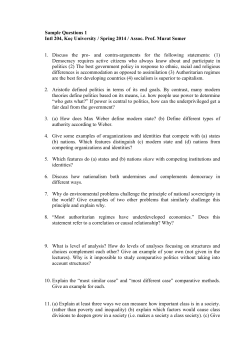
File
Section 5.2 Proving Trigonometric Identities Introduction For those who remember proofs in geometry, this section will be similar. In some situations, we will need to prove that an identity is true. To do this, we generally start with one of the two sides of the identity and end with the other. While I can and will give you generally strategies for how to do this, it is not possible to learn how to do this without practice. In some cases, you may try certain ideas only to find they do not lead anywhere. At times, trial and error may be the only way to arrive at a solution. Since each person methodology will be different, it is likely that two or more correct solutions exist. When we work through examples, keep in mind that the way I approach a problem does not have to be the same as yours. When we work through homework problems, I may often ask others to show their work instead of just showing a solution as I firmly believe that learning to do this is not done simply by watching me. Seeing different approaches can be very useful. EXAMPLE #1 One common approach for identities which contain fractions is to attempt to factor and reduce them. If this does not work, another common approach is to combine the fractions using a common denominator. Typically, one of these approaches will yield something which is familiar. EXAMPLE #2 Another common approach is to change tan and cot expressions to those which only include sin and cos. While there are exceptions, this often helps make everything easier to work with. It is also usually a good idea when the opposite side contains only sin and cos. For the following example, keep in mind that identities must have identical values. So if each side is considered a function, their graphs must be identical. Using this idea and your calculator, it can be easy to see which are equivalent. However, I will not accept “Calculator says so” as a proof of an identity. It is possible that two seemingly equivalent graphs really are not. EXAMPLE #3 Notice how the identity above uses a common denominator then uses a Pythagorean identity. Often these identities arise from multiply similar factors. In fact, using the identity (a + b)(a – b) = a2 – b2 is very useful to employ the Pythagorean identities to continue in a problem. EXAMPLE #4 So what do we do if we get stuck and cannot go further on one side? Well one option is to work on both sides. You might have noticed that would have been possible in this previous example to use both sides (essentially cross multiplying like a basic ratio problem) to get an equivalent expression. For more complicated problems, it may be necessary to change both sides. Often this is because both the left and right sides are complicated and neither is clearly the more complicated of the two. In many cases, you may need to work on one side to make it simpler and then do the same for the other. To make a rigorous proof of the identity, you should use the work from one side to continue from the original side. You can think of this as having the answer and cheating a bit to figure out where you need to go. This is referred to as “an intermediate step” as once you have it, you can easily work backward from the other side. We will see this at work in our next example. EXAMPLE #5 Disproving an Identity Fortunately, disproving an identity is much more easily done than proofing it. In general, this is true of all proofs. Showing that something is true for all values of x is usually much more difficult than showing that there is a value for which it is not true. For these cases, we can often simply graph both sides and see they are not the same. Then we can find a value for which they are not. Again, it is not possible to prove something with a single value or graph. However, it is possible to disprove something in this manner. Keep that in mind if you are asked for something such as this on an assessment. EXAMPLE #6 HOMEWORK ASSIGNMENT: p. 418 [12 – 16 even] (DAY 1) & p. 418 [17 – 35 odd] (DAY 2)
© Copyright 2025



















